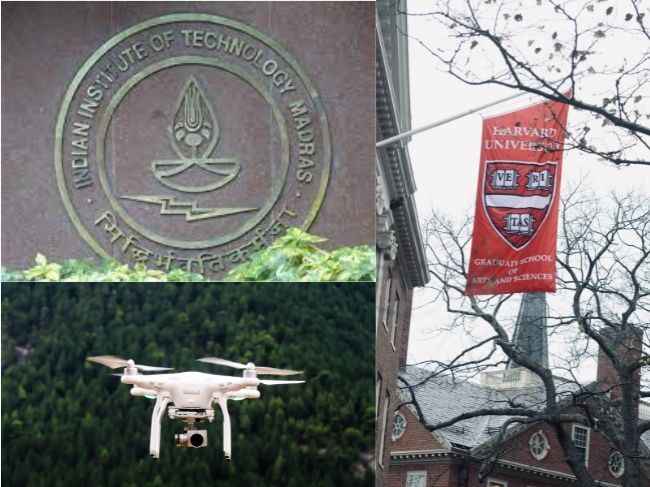[ad_1]
Illegal Wildlife Trade (IWT) is a serious threat to the safety and in some cases, the subsistence of several animal species. Even amid the pandemic lockdowns whilst we humans were compelled to take stock of life and morality, wildlife poaching was afoot. In India, according to the Wildlife Conservation Society (WCS), 522 unique reports of illegal wildlife hunting and trade were documented in the first year of the pandemic. To counter this, everybody from state-run institutions, and private philanthropists to educational institutions are coming up with various measures. One such initiative has come forth from the combined efforts of IIT Madras and Harvard University researchers.
The brains of these two imminent universities have co-developed a Machine Learning algorithm based on the mathematical principles of Game Theory. It aims to aid in both resource allocation and real-time drone-powered communication for on-ground patrolling. So, it coordinates both eyes on the sky and feet on the ground. Let’s dig deeper to understand how it works.
CombSGPO algorithm and Green Security Games

Green Security Games (GSGs) is a general framework employing Game Theory for tackling wildlife poaching and other crimes against the environment. Various influential organizations like Microsoft, Simons Institute, and Harvard are working on this. Here, in this case, it is being used for unified resource allocation and patrolling in the real world in real-time amidst all uncertainties.
Unlike earlier solutions, this new model with help of the CombSGPO algorithm claims to address both resource allocation and patrolling stages simultaneously. It works towards finding the best-case scenario for the defender using previous incidents and interactions between poachers and the defenders. It will strategically signal the other drones and human patrollers. Moreover, it is also designed to scale better.

Species under threat
“The work was motivated by the need to perform strategic resource allocation and patrolling in green security domains to prevent illegal activities such as wildlife poaching, illegal logging and illegal fishing. The resources we consider are human patrollers (forest rangers) and surveillance drones, which have object detectors mounted on them for animals and poachers and can perform strategic signalling and communicate with each other as well as the human patrollers,” said Prof. Balaraman Ravindran, Head, Robert Bosch Centre for Data Science and Artificial Intelligence (RBCDSAI), IIT Madras. Mr. Ravindran has conducted this research with Prof. Milind Tambe’s Teamcore Research Group at Harvard University, U.S.
Well, that’s the long and short of this IIT-Harvard tech.
Across the globe, technology is being heavily used to combat wildlife poachers. There are of course drones, but they come with concerns like battery life, cost of the device, and the cost of trained operators. Besides, some other technologies used in wildlife protection against poachers are tracking collars or embedded GPS/GSM chips, as well as sensors for speed, sound, and light.
As for other news, reviews, feature stories, buying guides, and everything else tech-related, keep reading Digit.in.
[ad_2]
Source link
